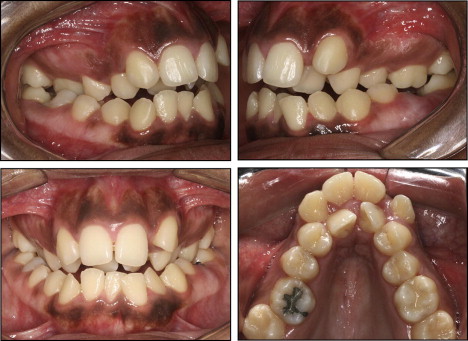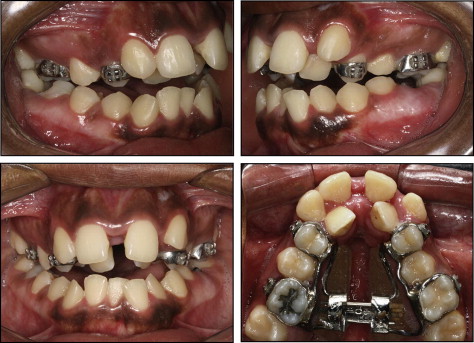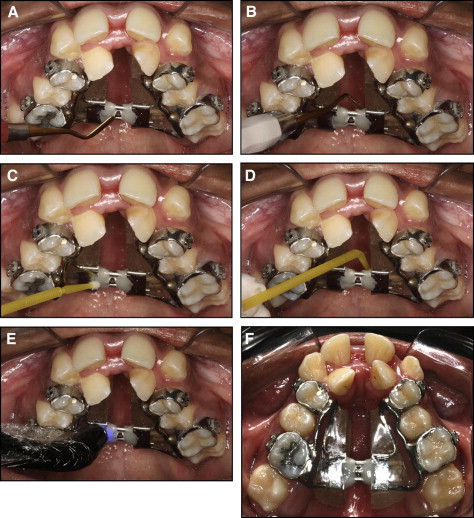In clinical situations involving accentuated atresia in the maxillary arch, palatal disjunction is called for. This treatment often requires an appliance change to achieve the desired movement. The aim of this article was to demonstrate a simple and effective method to increase the capacity of the expander screw and thus avoid the need to remove and replace it.
A main objective of orthodontic treatment is to correct any sagittal, vertical, or transversal discrepancy, whether of a dental or a skeletal nature, or a combination of the two. Several studies have demonstrated the effectiveness of rapid maxillary expansion in the treatment of transversal deficiencies.
Rapid maxillary expansion corrects the deficiency in the maxillary arch width by disarticulation of the median palatine suture and by the separation of the maxillary bones and the circummaxillary suture system. Palatal disjunctor appliances are used to achieve these results. These appliances have screws that are activated to promote separation of the palatine suture. However, patients with a severe maxillary transverse growth deficiency sometimes require expansion beyond the capacity of a conventional expansion screw. For these patients, it is necessary to insert a new appliance or change the screw to complete the opening of the median palatine suture. To avoid a second clinical-laboratory procedure, the aim of this article was to describe a simple and effective method of increasing the opening capacity of expander screws.
Case report
A 15-year-old patient sought orthodontic treatment for crowding. The patient had a Class II dental and skeletal relationship with accentuated maxillary atresia (18 mm) and no space to accommodate the maxillary and mandibular teeth ( Fig 1 ). Rapid maxillary expansion was proposed, followed by tooth extractions, use of an extraoral high-pull headgear, and correction with a fixed orthodontic appliance.

The first stage of treatment began with palatal disjunction with the mixed disjunctor proposed by Pithon. When the appliance was made, it was possible only to fit an 11-mm screw, because of the extensive maxillary atresia ( Fig 2 ). After the appliance was fitted, the patient was instructed to activate it 2 times per day for 22 days, creating an opening of 11 mm. However, another 7 mm of opening was still needed. To achieve this, resin composite was applied to the exposed threads of the screw to increase its expansion capacity. Initially, prophylaxis of the threads was performed with a Brush of Robinson (Microdont, São Paulo, Brazil) and pumice stone to eliminate the adhering bacterial plaque, which could compromise adhesion of the composite, followed by isolation of the operative field; then the resin composite (Z100; 3M ESPE, Sumaré, São Paulo, Brazil) was applied with a spatula used for composites and a brush imbibed in primer ( Fig 3 ).


After the composite was light-polymerized, the patient was instructed to activate the appliance for 14 more days, totaling 18 mm of screw opening. The patient was instructed to avoid eating chewy or tough foods to prevent fracture of the resin composite.
At the end of the 14-day period, the patient returned to the dental office, where the effectiveness of the technique was noted ( Fig 4 ).





